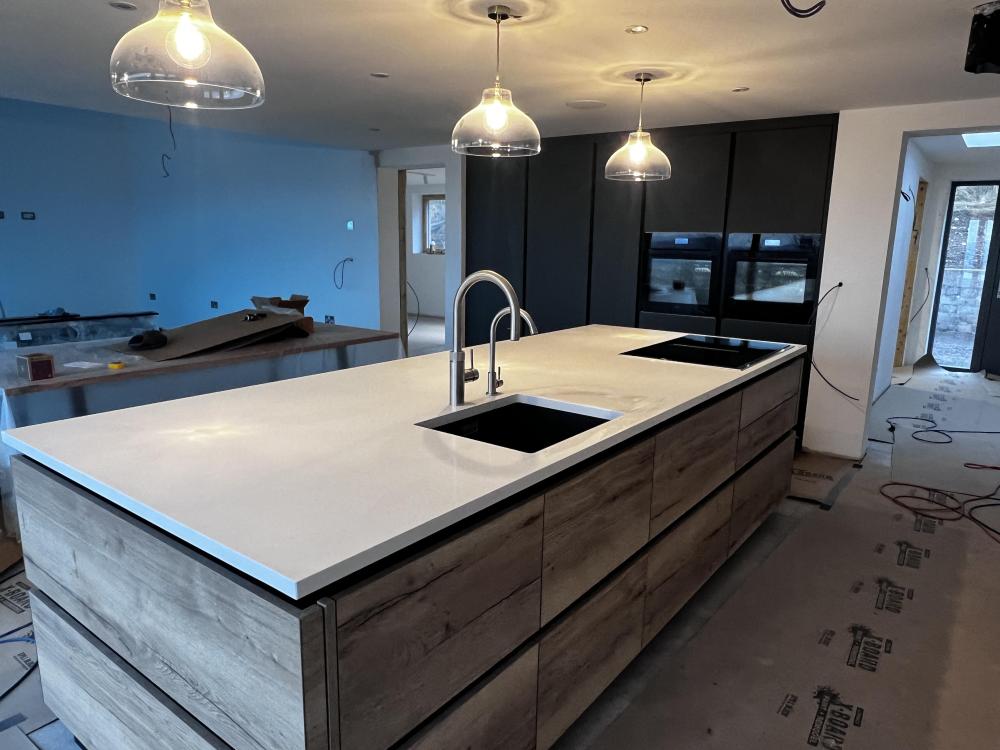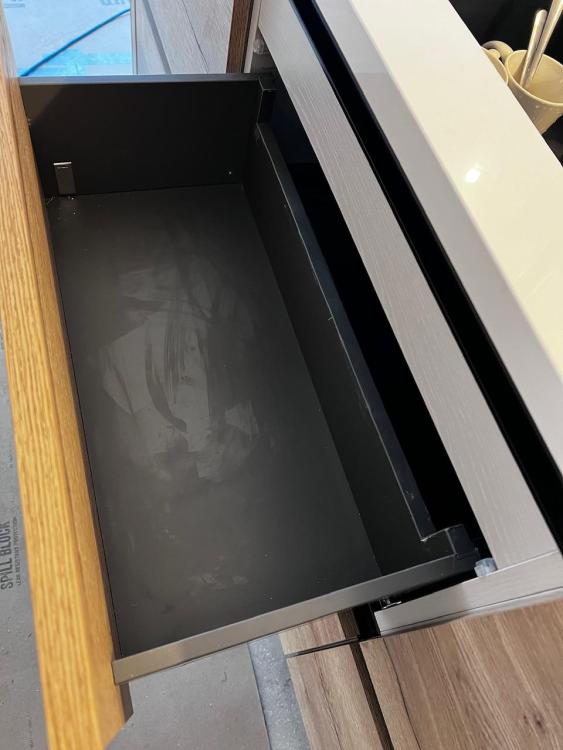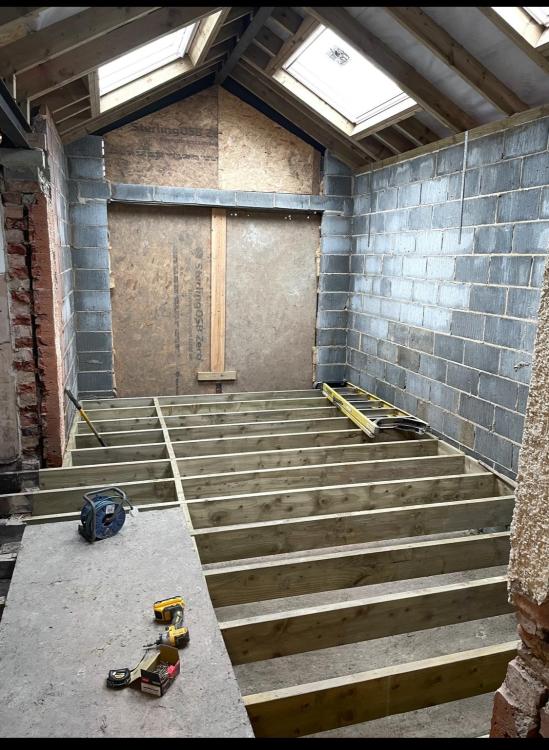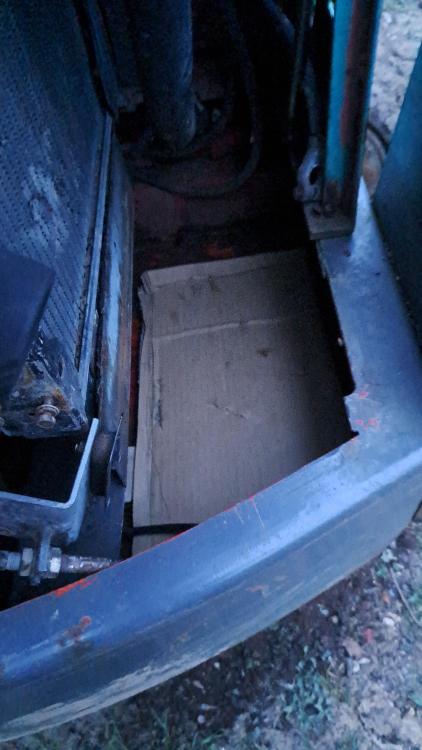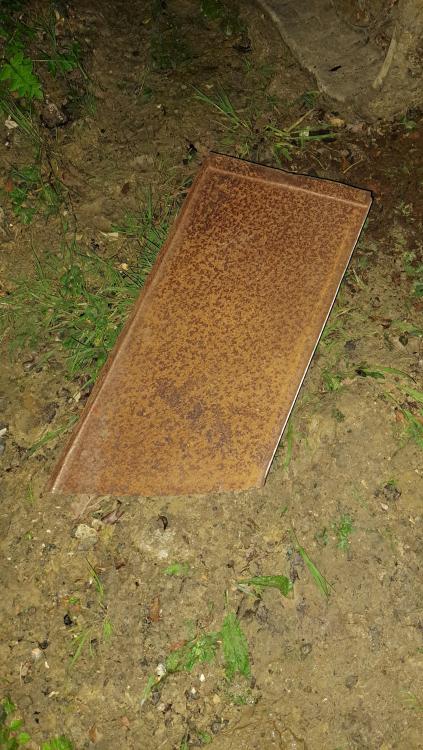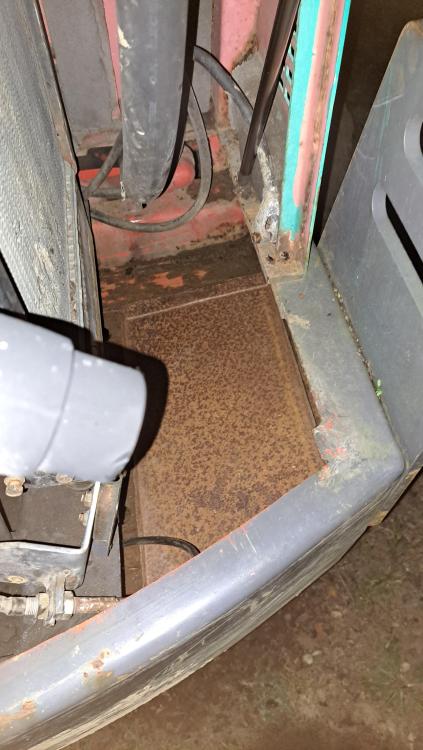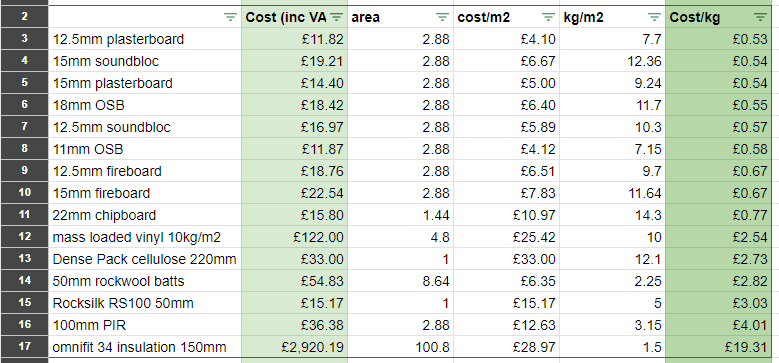Leaderboard
Popular Content
Showing content with the highest reputation on 03/18/24 in all areas
-
Kitchen and utility room finished. I need to fit the overflow for the utility room as it wasn’t in the pack and fit some black laminate tape to the top and bottom of the cookers as the light grey carcass stands out like a sore thumb. The sink drawer unit has been a pia but I managed to get the kitchen manufacturer to make me two short drawers and I cut out the back of the top drawer to get it to go past the sink. Feels a bit bodgy but it works and looks fine. I’ve made a bit of an arse of the Quooker plumbing insofar that the flex bit doesn’t really work as the weight is fouling the other hoses. I’m not entirely sure I can fix it to be much better. A job for another day. Main thing is we have hot and cold water in the house now.3 points
-
It's the "system" built up around the BUS grant that forces a cartel to charge as they please. Perhaps the journalists would do better if they looked at an installation in detail, costed the equipment supplied, noted how many people and how long it took then ask "so how can you be charging £4K for 2 man days work"? (for example)3 points
-
2 points
-
Agreed, sounds like youre path is above the damp course if the wet is entering the house 🤷♂️2 points
-
So @ETC, the OP's question, assuming that the PB is fitted to appropriate joists (they state its a ceiling), and they later state it is skimmed, then we are safe to say they have 30 minute fire rating. Shall we agree and all move on?2 points
-
2 points
-
We always add 10 mm to full fill cavity widths as the dritherm tends to expand (especially when wet) and push against the block walls a bit.2 points
-
ASHP, UFH, 4kw solar array for a minimum. Don't bother with gas. Wire for a battery, but the economics don't make sense to assume it in IMO, just have it as an option further down the line. Yes for 3PH, to enable multiple vehicle charging (ie 2 in garage and one outside for visitors). Invest in insulation and air tightness to pragmatic degrees, there is a law of diminishing returns. Spend the rest on hard wiring and future proofing options.2 points
-
But boring in the extreme! The weekend was the first fine weekend of the year where I was not working. So I put a bit of time into getting the digger serviced and ready for the spring groundworks. During testing it made a bad noise and on removing the battery that was more or less hanging on by the cables found the battery tray was slowly disassembling itself like a 1970s vintage Jaguar! Heaven only knows how the -ve terminal connected to anything through that rust! I resolved to fix the digger that day because it will be good for a biscuit or two in "House not finished anonymous" and the weather looks good for getting some industrial weeding done later in the week. Cardboard will work, won't it? Maybe not the cardboard. It's even less conductive than rust. I found some steel from the stores (read scrap heap). Bends formed with a bit of angle iron and a hammer. And it even fits in the hole. Welding and painting will be done next time I am not at work.1 point
-
Movements in the substrate can cause cracks to form in your new tiled surface. Old or damaged substrates, such as wooden floors can be particularly prone to this problem. The installation of anti-crack matting, or decoupling membrane as it is also known as, ensures small cracks in the substrate are absorbed by the matting, in effect the tiles are decoupled from the floor and cannot be damaged. The mats are easy to fit and provide added peace of mind for your tiling installation. This from the internet so I guess the tiles can come up without damaging the floor (but ask your tiler). I still think hardwood flooring would be best at absorbing any movement, however it’s caused. I have laid LVT and can’t imagine it would crack like tiles.1 point
-
1 point
-
https://omnie.co.uk/torfloor2/#:~:text=The original and market leading,fixing the panels to joists. The OMNIE TorFloor 2® Underfloor Heating system can be used on joist centres up to 600mm with no compromise on the integrity of the floor deck. However So not 4x2 🤷♂️1 point
-
the long and the tall of it is the joists are not man enough if you have 22mm boards on them and then another 6mm ply and you have deflection. would never use 4x2 unless its a very short span, 2m max.1 point
-
@joe90 The TorFloor 2 Standard system comprises of a 22mm chipboard deck panel with a 6mm woodfibre cover panel with bonded layer of AL HEX aluminium diffuser foil.1 point
-
In our case, I didn't employ an architect. I used a 3D visualisation to plan out the layout to ~5 cm precision. We had some particular (but not uncommon) requirements. The whole house is on 3 storeys including a warm loft (used as my live-in son's bedsit) and laid out on a general 3×2 tile with the front centre tile being a lofted hall void with an open floating staircase spiraling up the two flights and the rear centre tile used for utility and bathrooms to simplify pipe runs. I had to make damn sure that this would work as a space and comply with BRegs. A local architectural technician converted this to basic plan and elevation drawing to our planning application. I passed this AutoCAD drawing to the MBC AT and we went through 6 design cycles to get to the final drawing sets for both slab and TF / cassettes, UFH plans, etc. I had to do a load of tweeks, e.g. slightly repositioning glulams to keep foul-water and MVHR runs clear. We have 60° reveals on all of our windows so I did all of this detailing myself -- We have a stone skin, so fenestration involved 3 separate subs (MBC for TF, local builder for skin, Internorm for the fenestration) and any interface between three subs is always a recipe for trouble. So I probably did a better job myself and also saved maybe £25K professional. OK, this took a lot of focus and effort on my part, but thanks to MBC I didn't have to worry about cold bridging issues and how to make sure that the build was airtight.1 point
-
You could do without the grant for that or less. Full price ASHP £2.5k, cylinder £1k, bits and bobs £500. I ran my cables the electrician charged me 2 hours for termination and testing. I did the plumbing, but a plumber for two days max1 point
-
Looks too hard and too moist. If the crack is the dpc, I would hack off the render just above that level, and also look at 'softening' the horizontal surface. I take your point: ...but somehow you need to try to achieve some 'softening'.1 point
-
Well I am guessing but your DPC should be where the render finishes, so in that case the lower section is below the DPC and may well be sucking damp up. Where is the damp showing inside?1 point
-
You really need a gap between wall and path. Sounds more like a drainage problem. Is this an old house? Outside ground above inside floor level?1 point
-
1 point
-
1 point
-
If you haven't built yet then consider an insulated slab, so no need for a screed.1 point
-
Have you this fitted yet? If you were to put it exposed on the ground floor ceiling it would really help quieten the echo in those rooms. The way I think about airborne noise is to compare it to water sprayed from a hose. Obviously if you were to get lots of splashback like you would from plain plasterboard then the same will happen with noise. Spray a hose onto wood wool and it'll kinda fizzle out. For sound it'll make the room much less "echo"y. The water hose though idea works for air gaps and reverberation too.1 point
-
You can get away with 10mm gap if you use interlocking PIR with taped joints, but that's such a faff to do properly, just got full-fill rockwool.1 point
-
I full filled my 200mm cavity with Dritherm, two layers of 100mm batts.1 point
-
Yes, panels interlock. They are 1525 x 1525 15mm birch ply sheets - the original intended floor finish design for the upstairs of the house. These are routed with a tongue & groove and glued together. The cork underlay has a supposed 18dB Delta Lw - it makes a difference compared to the uncovered osb subfloor, but not by a huge amount. It is fully floating. I was gifted it as it was excess from another project - lets say it's enough for my whole downstairs ceilings. Given its acoustic properties I thought there's no harm in using it as all it cost me was a journey in the van to collect. Good points. I'd been recommded 150mm by one manufacturer's tech department but was a bit dubious given how thicker doesn't necessarily mean better in walls either. I wondered whether there was a bit of overselling plus an assumption that thicker was better by the tech rep. That's the key here that I'm missing is to add mass. That's going to be another one of those painful jobs just like airtightness where everyone wonders where I've disappeared to for so long and they can't see anything done!1 point
-
Certainly UFH to get best efficient use of the ASHP, but not necessarily a thick screed? As it's a new build, lots of insulation and good air tightness and it'll retain the heat without the need for the 'storage heater' of the thick slab? Of course it won't do any harm though.1 point
-
To get most advantage of ToU tariff you really need UFH and use as a storage heater. So a thick screed is good 100mm +/-. It takes a long time to heat and cool down.1 point
-
The downward heat loss is a function of the floor U value, the delta temperature of the floor and the space below multipled by the area. So space below assume 20 degs, your flat temp assume 20 degs. Area 40m2. So UFH assume mean flow temp is 35. Your 0.75 R value, and U value is 1/0.75 so is 1.34 Downwards heat loss UFH 1.34 x (35-20) x 40. Is 804W, then multiple by 24 to loss per day and by 0.27 to get cost per day £5. With a heat the CoP will be around 3, £1.70 Radiator, fan coil etc. Temp Delta between your flat and downstairs zero so zero downward heat loss. Having UFH will cost you you around £1.70 per heating day. So about £320 a year.1 point
-
ASHP, and go big on solar and battery. 10kWp+, 20kWh+ battery, do it at this stage as cheaper. Then you can take full advantage of cheaper ToU tariffs and run majority if not all of the year on cheap rates/free PV electricity.1 point
-
As above. Regardless of what people say and think, we are going 'all electric', it makes long term sense for many reasons.1 point
-
You can do gas. We started gas and 3kW of PV. Gas boilers are difficult if you have a low energy requirement house, as they are just too big. Now we have 7+kW PV, battery and ASHP. March is still heating season for us, but electric import yesterday was £1.60, today looks to be 65p (best cost days so far this year). Heating run overnight on both nights. That is only possible because we have the battery and can run E7, cost effectively. With the good and bad days of the winter, the battery and E7 have been £386 cheaper than running the house on just normal rate electric and a similar amount cheaper than gas and electric last year. Looking to make even greater savings during the summer. (I don't get paid for exported electric)1 point
-
I’m baffled as to why you are building with sips and then having to add extra insulation. either get a better sips product or find a different method of building happy to be educated as to the reason.1 point
-
If you went with something 120wide you could cover the outer face in ply to cover the top and bottom flange, for fixing to.1 point
-
Agree which the process you outline, but the res bars don't do much to control impact noise. Not sure what the Cork product is? @SimonD can you give any more details of your floating ply floor (do the panels interlock) what is the cork product? I dont think this will do much for reducing impact noise. Also make sure you put a resilient flanking strip round the perimeter of the room for it to be truly floating. Also I presume your are not screwing the ply down. Also why wood wool boards under the joists? 100mm in the cavity is fine, you don't really need more there, just make sure it has a decent density (BG spec a min 12 kg/m3 though I feel 24 kg/m2 is a better min) Put some res bars under the joists and a layer or two of 15mm Soundbloc. Boards staggered, and different length screws for each layer of boars, tape and joint it, with flexible mastic at the perimeter BTW these sorts of build ups are more akin to floors separating flats and internal floors don't need so.much treatment for building regs (unless you want to do this and have the money too). Also any areas which are carpeted and will stay that way won't need a resilient layer as the underlay is it1 point
-
Rather than look at the floor area £.m-2, why not compare the differences on the total surface area £.m-2. That reflects the amount of materials/work much more accurately.1 point
-
You need to deal with 1. Airpaths - lots of acoustic mastic at any joints and at the walls. Seal all gaps. 2. Reverberation - A layer of fluffy stuff just to stop the drum effect.Thats why 175mm won't make much difference Vs 100mm here. 3. Impact noises - decouple the surfaces. You've done this with the resilient bars and to some extent the cork. 4. Add Mass. Plasterboard, standard or soundbloc or OSB is the cheapest way, more the merrier. (Insulation is a dear way to add mass)1 point
-
It's about 270l full, a 300 shell with expansion volume; and both the ASHP and DHW coils are around the 3m2 mark. I run the DHW from the heat pump at a 51c setpoint and a 2c hysteresis, so what with stratification and deltaT on the flow the top of the tank is 55-57c. The sensor is halfway down, between the DHW and ASHP coils. Myself or Boy Wonder can have a shower before the heatpump cuts in, better half about 3/4 of a shower. But the output temp never drops noticeably as the heatpump is quick enough to replenish the heat... So at reasonable flow rates I only see a few degrees between TS temp and DHW at the tap. Also, in the cold weather I run a timed boost on the upper immersion at getting-up time so the heatpump can focus on charging the slab without unneccesary defrosts. At E7 rates I'm sure the difference in COP makes minimal difference. Obviously if the stove is/was lit, or the sun's been out and the diverter has been busy, there's a lot more energy to play with too.1 point
-
The Screwfix blurb is wrong. The 15mm versions use JG Speedfit connections and the Reliance website states these versions are "suitable for use with Speedfit PEX and polybutylene barrier pipe [inserts required] and copper pipe" - see https://www.reliancevalves.com/gb/en/products/flow-control/plumbing-strainers-flow-regulators-manifolds/potable-water-manifolds1 point
-
Agree with George above.. I would look at the benefits of a box frame before ruling out.1 point
-
But due to the change in BR’s, options would need to be presented to BC as opposed to BC saying what would pass.1 point
-
You know the only way to resolve this is to ask your BC provider. It's them that are going to have to sign this off. This what the flexibility of the Approved Document approach was supposed to do - allow for unique design features to be assessed against the basic requirement of providing adequate means of escape in case of fire. The pre- 1985 regulations were prescriptive and any diversion had to be dealt with by a formal relaxation application.1 point
-
€514/M2 plus vat in 2019 for a 2 story completely rectangular house without no big windows and a hipped roof. This was the twin wall frame and raft. Probably completely meaningless 5 years later however.1 point
-
The MBC package is the most complete one I know of. It's really well though out. The only bits I'm a little iffy about is the sparse window and threshold details.1 point
-
@SBMS It is difficult to do an apples and oranges comparison here. The fact that a lot of members including me chose the MBC route means that it can be an excellent price for a given set of circumstances. The best thing is to talk to the vendor direct In my case I felt that MBC offered a pretty well rounded passive offering: custom slab and TF design including fabrication and onsite construction. The MBC design and the construction guys onsite really understood the implications and detail of building to passive class. You can be confident in getting a complete airtight (say to 0.4 ACH) and well insulated build -- all in one package. Yes, you could multi-source and reduce the nominal costs, but only then to find that you need to take on a lot more detailing yourself to hit the as-designed spec. As point of reference we have a natural hand-dressed stone skin on our house (to comply with Local Planning requirements); the materials and labour for this cost us as much as our MBC bill.1 point
-
Why not just get a quote from MBC, instead of going around different groups, what ever answer you get, will not be the same answer given for your design.1 point
-
Choose your battles, foundations have time scales. Dig, building control inspection, fill with concrete. Leave it too long or take too long, they fill with water or the sides collapse. Access starts to become an issue, once you start, depending on the site layout.1 point
-
1 point
-
Good advice and ideas above. I'm torn. A fabricated boxing may be vulnerable to bashing and difficult to repair. However it would flex with the building if the door is bashed, and in wind. Block can be tied to the steel and will be robust, but the render may crack.... but is easy to patch. If you go the block route then use self drill, self tapping tek screws with the correct head (called a 'heavy') for hot-rolled steel (ie not for cladding or light weight steel). They are easy to find at a specialist fixings merchant, and a driving head to suit. Then you can use standard L wall ties. These screws are much easier to fix than hilti nails, using a normal drill and you can be certain they will stay put. Paint the steel with bitumen paint and it won't rust. or a fancier, coloured steel protection paint. If the base plate is exposed, then paint it and any mortar packing too. And pack the cavity with cavity insulation.1 point
-
1 point



